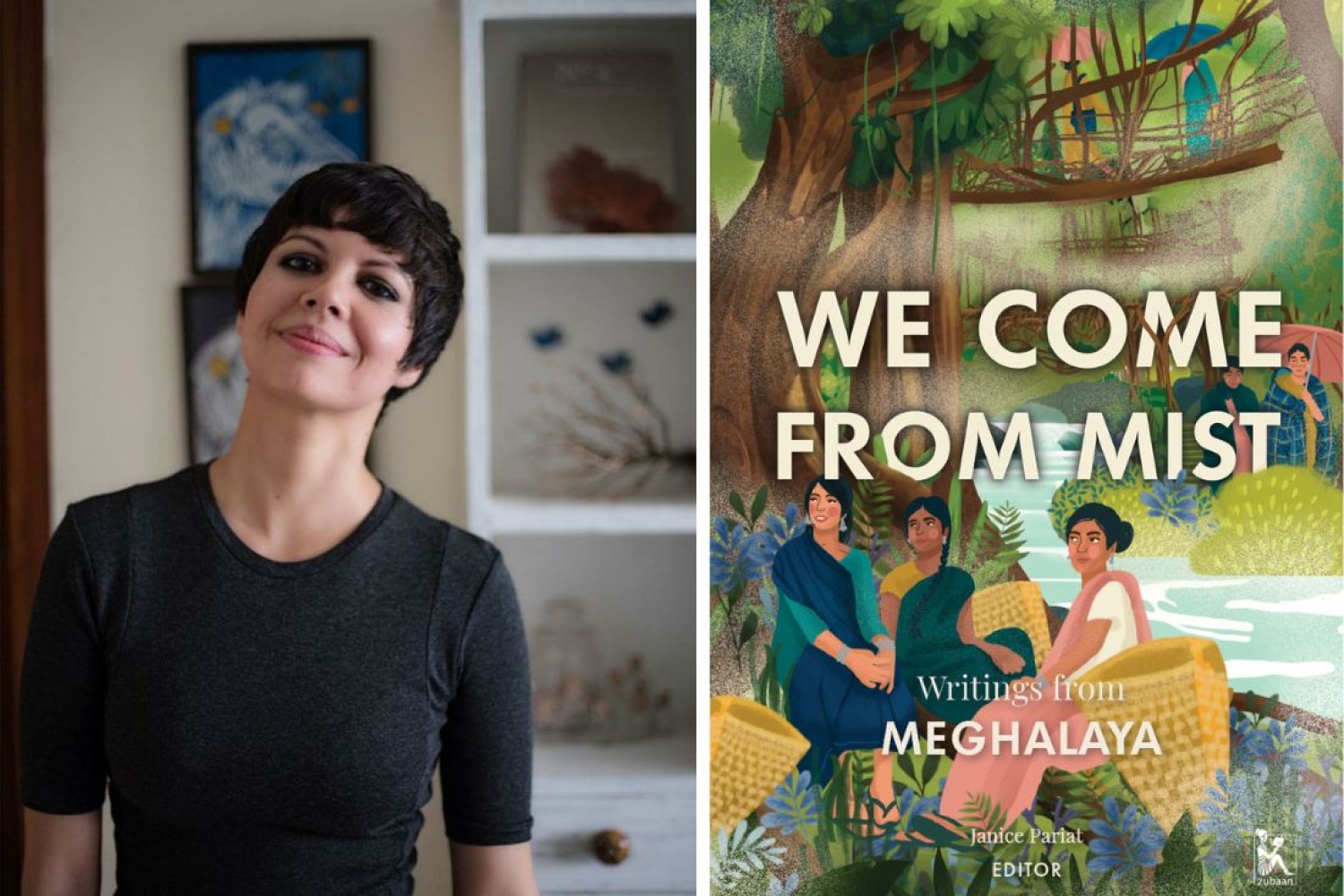

We Come From Mist: Writings from Meghalaya is an offering of prose, poetry, musical lyrics, and visual art by the women of Meghalaya in Northeast India. One of the smallest states in the country, but also, one of the most beautiful, Meghalaya is blessed with landscapes that mesmerize and inspire songs and stories. In the not-so-distant past, though, it has also seen political turbulence and civil unrest, and many of the works here capture that quiet unease — in homes and kitchens, in market-places and public taxis. Yet this anthology is also a celebration of wisdom and joy, queerness and sisterhood, mothers and feminine bodies, home and hearths, the new and established. Novelist and poet from these very hills, Janice Pariat brings together all of these works in one volume and we had the pleasure to talk to her about this new anthology.
Can you share your inspiration behind curating this anthology? What motivated you to bring together the diverse voices of women from Meghalaya?
I was approached by the lovely team at Zubaan, who were working to publish a series of anthologies from each of the states in Northeast India, that collected women’s writing and visual art. I was invited to edit the anthology for Meghalaya, and I was thrilled and excited to accept. And nervous too, since this for me is a first.
How did you approach the curation process to ensure that different experiences seamlessly come together into a representation of Meghalaya's identity?
To begin with, I wished for the curation process to be propelled by an open call for submissions – you never know what wonders may land up in your inbox, and that is exactly what happened. I supplemented this with a few invitations to submit, that I sent to writers, poets, artists, photographers, musicians whose work I knew and admired. The open call and the invitations were embracive of those who identified as women, and also to those who may not “ethnically” originate from the region but for whom Meghalaya was home. Submissions were also accepted from those who may not live in Meghalaya any more, but who have strong ties to the place. It was important to not curate a Shillong-centric list – to include voices from beyond the capital town. And to also include works written in the languages of these hills and in translation. In terms of content, I was keen to gather textual pieces in the form of fiction, poetry, essays, graphic stories, visual art and photo essays, and also song lyrics as we have incredibly strong musical traditions here, springing from our oral community roots. I was lucky that the submissions that arrived, on their own, magically, seemed to cover a vast array of topics. From women and body politics and lineage to the trouble years and the deeply complicated question of belonging. On growing up queer in Shillong, on living outside and missing home and not missing home. On love and relationships. On beauty and our mesmerising landscapes. Honestly, it was a joy to bring them all together, but they also arrived aligned in some mysterious way. It was a chance for me to get to know home, to expand a canvas I feel I’m only beginning to understand.
Could you delve deeper into the significance of the title, We Come from Mist, and how it encapsulates the essence of the anthology's message?
The title alludes to Meghalaya’s landscape, of course – the land of the clouds, and how they form a part of our every day, especially during the rainy season. It’s a dramatic, unforgettable sight. But beyond that, it also acknowledges our deep and rich oral traditions. The Khasi script was invented by the Welsh Christian missionaries in the 1850s, and we have a young and new relationship to text, while the spoken and the sung echoes deep in our hills and our bones.
What do you think the current landscape of narratives from the North-East is missing?
This is a terribly broad question. As you might be aware, the term “Northeast” is a geographical lumping together of a rich and diverse fabric of communities and cultures. I cannot, and refuse, to speak on the behalf of the “Northeast”. I could perhaps have something small to say about Meghalaya – though I’d prefer to focus not on what’s missing but on abundance. And this would be poetry. And songwriters. Possibly because of our deep oral storytelling roots, we have a wonderful abundance of both.
Lastly, are you working on anything right now?
Not really. Taking a break after the publication of Everything the Light Touches and We Come From Mist. But I suppose as a writer one is never really on a break – I think about writing, and what I would like to be writing almost every day!
Words Neeraja Srinivasan
Date 24.08.2023